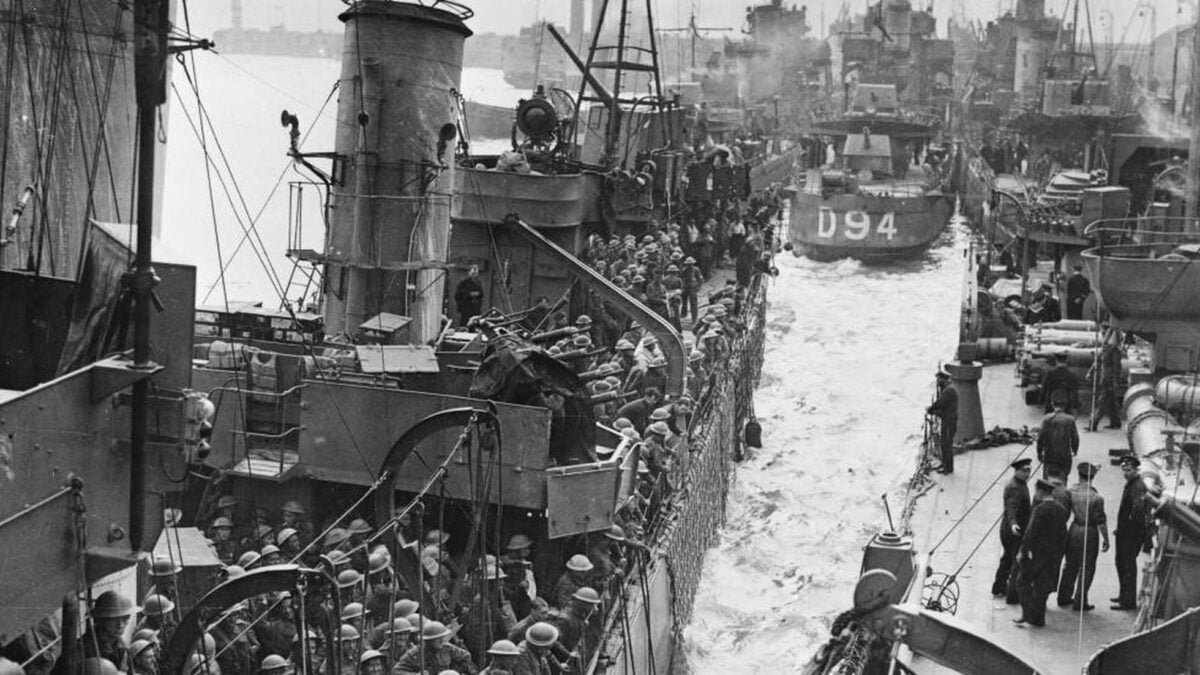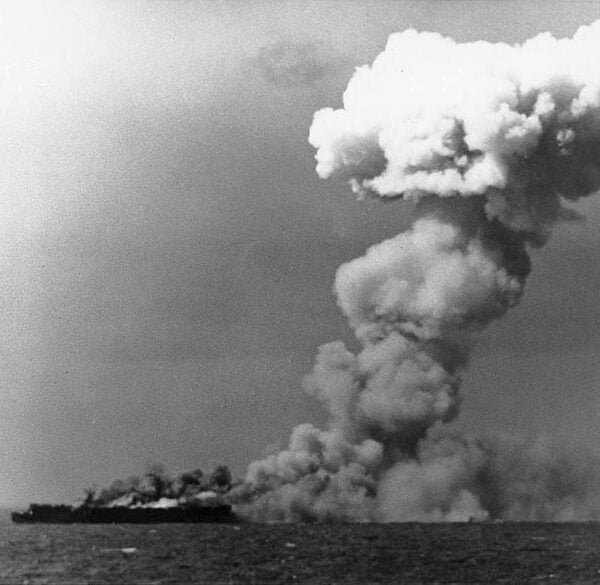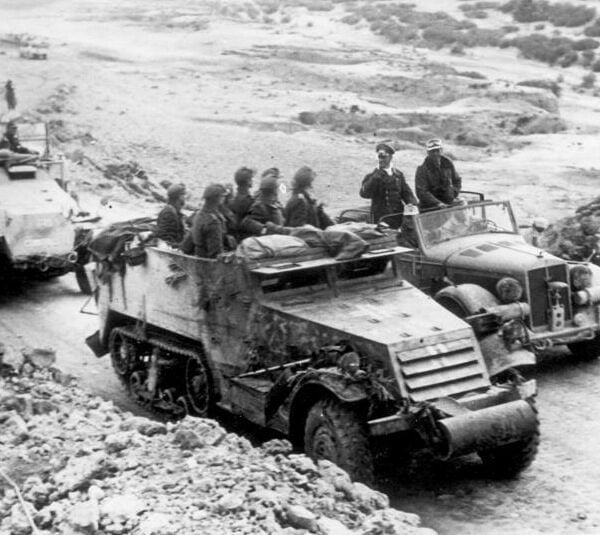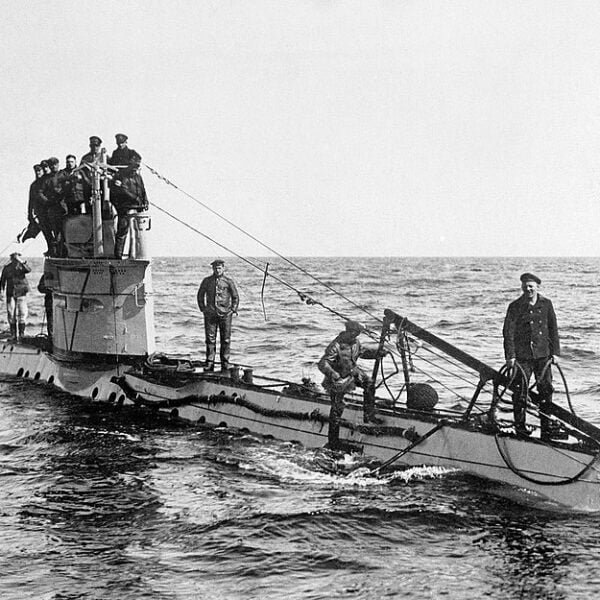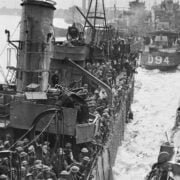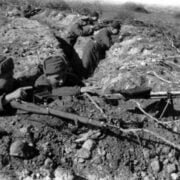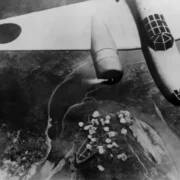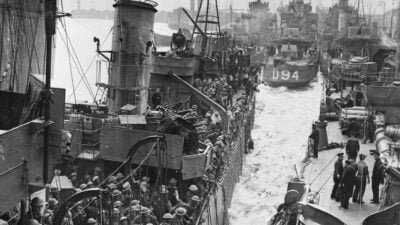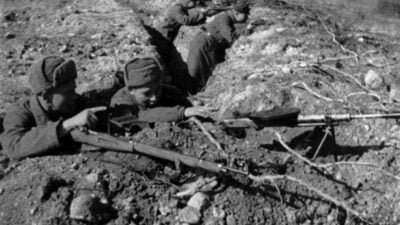The Battle of Sevastopol, which took place between October 30, 1941, and July 4, 1942, during World War II, was one of the most notable and fierce conflicts of the war. This battle, fought between Soviet forces and Axis troops, especially German and Romanian, around the port city of Sevastopol in Crimea, represented a remarkable example of courage and resistance.
Also check out: Unit 731: A Shadow in Japanese History
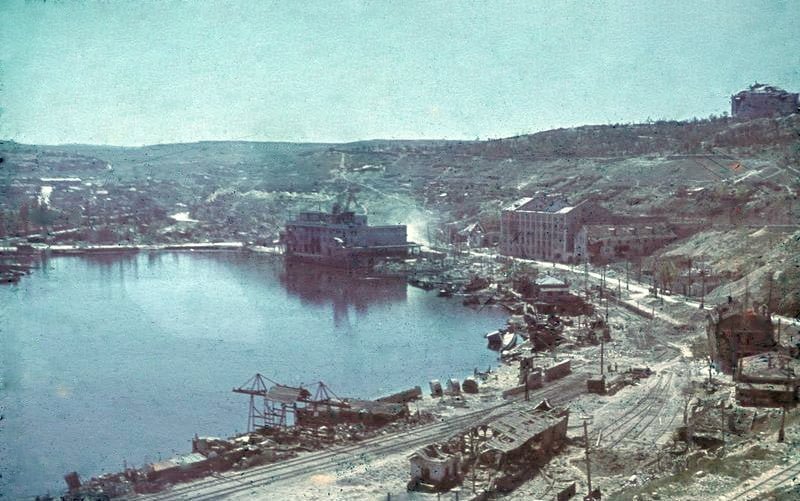

Historical Context of the Battle of Sevastopol
To understand the significance of the Battle of Sevastopol during World War II, it is essential to place this confrontation in a broader historical context. The battle unfolded amid crucial events of the war and reflects the complex dynamics of the global conflict.
World War II
World War II was the most devastating and comprehensive conflict in history, fought from 1939 to 1945. The war involved most nations worldwide on two opposing sides: the Axis Powers (led by Nazi Germany, Fascist Italy, and Japan) and the Allies (primarily comprising the United Kingdom, Soviet Union, United States, and other countries).
The conflict had its roots in the rise of Nazism in Germany, led by Adolf Hitler, who sought German territorial expansion, the weakening of communism, and European dominance. The invasion of Poland in September 1939 triggered the war, with the Allied powers responding to the aggressive act by declaring war on Germany.
Operation Barbarossa: Invasion of the Soviet Union
The Battle of Sevastopol was one front in the so-called Eastern Front, where German forces, along with their allies, invaded the Soviet Union on June 22, 1941. This campaign, known as Operation Barbarossa, was a key event in World War II.
The German invasion of the Soviet Union had multiple objectives. Hitler aimed to conquer vast territories, eliminate the communist threat, capture economic resources, and weaken the Soviet enemy. The invasion was characterized by its brutality, with the German Army advancing deep into Soviet territory.
Strategic Importance of Crimea and Sevastopol
Crimea, a strategically located peninsula in the Black Sea, became a crucial target for Axis forces during the invasion of the Soviet Union. The peninsula provided a base of operations for controlling the Black Sea and advancing into southern Soviet Union, threatening supply routes and the Mediterranean Sea.
Sevastopol, the main city and port of Crimea, played a central role in this context. Its port would allow German forces to control the waters of the Black Sea, facilitating the advance toward the Caucasus and other strategic areas.
Soviet Resistance in Sevastopol
In response to the German threat, the Soviets established a defensive line in Sevastopol. The city was fortified, and its defenders, including sailors from the Black Sea Fleet and soldiers from the Red Army, prepared for a fierce battle. The Siege of Sevastopol, lasting several months, witnessed a tenacious and resolute defense of Soviet fortifications as Axis forces attempted to break through the defensive lines.
Relentless Resistance and Indescribable Suffering
The Siege of Sevastopol was one of the most distressing and brutal phases of the Battle of Sevastopol during World War II. The city of Sevastopol, situated on the Crimean Peninsula, was subjected to a prolonged and unrelenting siege by Axis forces, including Germans, Romanians, and other allied nations, for a period lasting over seven months.
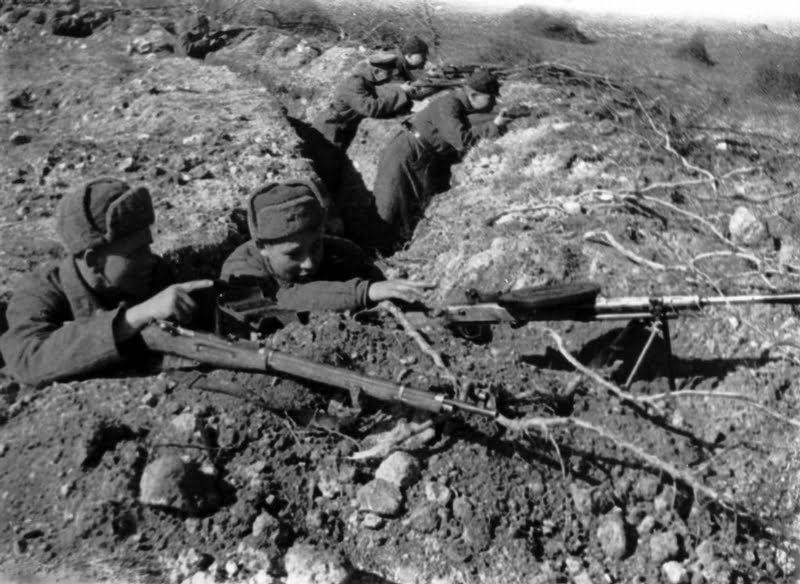

Desperate Situation of the Battle of Sevastopol
The siege began on October 30, 1941, and extended until July 4, 1942. During this period, the city faced incessant pressure. Axis forces besieged Sevastopol, cutting off all land supply routes and blocking the city’s port, making it entirely dependent on supplies by sea.
The situation deteriorated rapidly for the besieged population. Shortages of food, fuel, ammunition, and other essential supplies reached critical levels. The city’s residents and Soviet troops endured unimaginable hardships as hope for relief dwindled over time.
Precarious Living Conditions
In addition to the scarcity of supplies, the siege imposed extremely precarious living conditions. Medical facilities and hospitals became overwhelmed, and the treatment of the wounded and sick became insufficient. The suffering of the population, including civilians, was compounded by the lack of adequate medical assistance.
Hygiene conditions significantly worsened, leading to increased diseases and epidemics. Hunger, lack of proper shelter, and the intense cold of the Russian winter only exacerbated the suffering of the besieged population.
Tenacious Resistance in the Battle of Sevastopol
Despite the desperate conditions, the defenders of Sevastopol refused to yield. The city’s fortifications were well-built and heavily defended, making it challenging for Axis forces to advance. Tunnels, trenches, and underground shelters were dug to protect soldiers and the civilian population from bombardments and attacks.
Soviet forces, including the Black Sea Fleet, played a crucial role in the resistance. Stranded ships on the coast were converted into coastal batteries and used to bombard enemy positions, hindering the German advance. Soviet troops fought with bravery and determination, even as conditions became increasingly unfavorable.
The Importance of the Black Sea Fleet
The Black Sea Fleet played a significant role. The stranded ships not only acted as coastal batteries but also attempted to break the German blockade by bringing vital supplies to the besieged city. However, these missions were extremely dangerous, as the Black Sea Fleet faced constant and fierce attacks from Axis forces.
Relentless Combat in Sevastopol
The tenacious resistance demonstrated during the siege of Sevastopol is one of the most notable aspects of the Battle of Sevastopol in World War II. The city’s defenders, comprising a mix of Soviet soldiers, sailors from the Black Sea Fleet, and civilians, faced almost insurmountable challenges with exceptional determination and courage.
Fortifications of Sevastopol
The city of Sevastopol was prepared to withstand a siege. Before the war, defensive fortifications, including bunkers, trenches, barricades, and underground shelters, were constructed. These defenses made the task considerably more difficult for Axis forces as they attempted to break through Soviet defensive lines.
The underground tunnels, stretching throughout the city, allowed defenders to move and supply relatively safely, even under enemy fire. The ingenuity of Sevastopol’s defenders was evident in how they used the terrain and structures to create a network of fortifications.
Determination of the Defenders
Soviet forces and the civilian population of Sevastopol joined forces in a concerted effort to defend the city. Soldiers, many of whom were sailors from the Black Sea Fleet, demonstrated unwavering courage. They were willing to fight to the end to protect the city and resist enemy aggression.
Civilians who remained in the city also played a vital role in Sevastopol’s defense. Many were recruited to assist in the defenses, while others voluntarily participated in combat operations. Men, women, and young people, even without formal military training, joined the fight, demonstrating remarkable resilience.
The Black Sea Fleet
The Black Sea Fleet played a crucial role in the tenacious resistance of Sevastopol. Stranded ships near the coast were adapted to serve as coastal batteries, bombarding enemy positions and impeding the advance of Axis forces. These ships played a strategic role in maintaining control of the sea and preventing the arrival of German reinforcements by sea.
Resistance to Axis Offensives
During the siege, Axis forces launched a series of offensives to try to break Sevastopol’s defenses. However, they faced fierce and unwavering resistance. German, Romanian, and other Allied attacks were repelled with tenacity, resulting in heavy enemy casualties.
The siege witnessed numerous bloody battles, where Soviet forces defended every inch of ground with determination. Tunnels and underground shelters became refuge and resistance locations as defenders maintained constant vigilance against German attacks.
The Role of the Black Sea Fleet in the Battle of Sevastopol
The Black Sea Fleet played a vital role in the tenacious defense of Sevastopol during the city’s siege in World War II. Its strategic importance was undeniable, as control of the Black Sea was crucial for both conflicting parties.
Pre-War Black Sea Fleet
Before World War II, the Black Sea Fleet was one of the most powerful fleets in the Soviet Union. Headquartered in Sevastopol, the fleet extended along the coasts of Crimea, Ukraine, and the Caucasus. It consisted of a variety of warships, including battleships, cruisers, destroyers, and submarines.
The Siege of Sevastopol
When Germany launched Operation Barbarossa in June 1941, the Black Sea Fleet had to quickly adapt to the new circumstances. The siege made the Black Sea Fleet an integral part of the city’s defense. Sevastopol and the Crimean Peninsula were strategically essential, and control of the Black Sea played a crucial role in the struggle.
Adaptations of the Black Sea Fleet
Many of the ships were stranded near the coast, transformed into coastal batteries, and used to bombard German and Romanian positions. This change in tactics allowed the fleet to continue contributing to Sevastopol’s defense, even under the limitations imposed by the German blockade.
The fleet also engaged in dangerous missions to break the blockade and bring supplies to the besieged city. Light ships, known as barges, were used to transport vital supplies and troops to the city via the Black Sea. These missions were risky due to constant attacks from Axis forces.
Challenges and Achievements
The fleet’s ships were frequent targets of enemy bombings, and the German air force relentlessly attacked the vessels. Despite these challenges, the fleet continued to play a crucial role in Sevastopol’s defense and in maintaining control of the Black Sea.
Preventing Enemy Advance
One of the Black Sea Fleet’s greatest successes during the siege was preventing the advance of Axis forces through the Black Sea. Fleet control over the waters made it difficult to supply reinforcements and provisions to the besieged German and Romanian troops in Crimea. The ability to maintain this maritime blockade contributed to the city’s resistance.
Unimaginable Suffering during the Battle of Sevastopol
The siege of Sevastopol, fought between October 30, 1941, and July 4, 1942, during World War II, was a period marked by adverse conditions that challenged both the soldiers and the civilian population who remained in the besieged city. During this prolonged siege, the difficulties imposed by shortages of supplies, relentless bombardment, and a lack of adequate medical assistance made life in Sevastopol a true hell.
Famine and Supply Shortages
One of the most distressing conditions faced by the population of Sevastopol was famine. The siege disrupted the supply of food and other essential supplies to the city. Food stocks quickly diminished, and daily rations became increasingly scarce.
The inhabitants of Sevastopol faced a monotonous and malnourishing diet, with limited access to bread, cereals, meats, and other basic foods. Many resorted to emergency rations, including combat rations originally intended for soldiers. Widespread hunger weakened the population, making them vulnerable to diseases and nutritional deficiencies.
Shortage of Water and Fuel
In addition to the lack of food, the besieged city also suffered from a shortage of water and fuel. Access to clean drinking water was a constant challenge, as wells and water supply systems were damaged during bombardments. The lack of fuel made cooking, heating, and essential vehicle operations extremely difficult.
Bombardment and Destruction
Sevastopol was under constant aerial and artillery attack by Axis forces. The incessant bombardment caused the destruction of buildings, infrastructure, and essential facilities. Residential areas were transformed into ruins, and the city’s inhabitants had to seek underground shelters to protect themselves from attacks.
The bombardment was not limited to structures but also resulted in human losses. Civilians and Soviet soldiers were killed or injured by air and artillery attacks, further increasing the suffering and trauma of the besieged population.
Precarious Medical Conditions
The scarcity of adequate medical assistance made medical conditions in Sevastopol even more worrisome. With hospitals overwhelmed and a lack of medicines and medical equipment, many wounded and sick individuals did not receive the necessary treatment.
Unsanitary conditions and a lack of hygiene contributed to the increase of diseases and infections, making the medical situation even more precarious. The population of Sevastopol suffered from outbreaks of waterborne diseases, respiratory illnesses, and gastrointestinal infections.
Resilience of the Population
Despite adverse conditions and indescribable suffering, the population of Sevastopol and the defenders of the city demonstrated remarkable resilience. The community came together to support each other, sharing what little they had and helping maintain morale amid adversity.
The Battle of Sevastopol Continues
Despite the siege coming to an end on July 4, 1942, the legacy of the city and its significance go far beyond that specific period. The Battle of Sevastopol left a lasting impact and inspired countless generations to resist in the face of adversity and defend their homeland.
Inspiration for the Future
Sevastopol’s tenacious resistance, marked by adverse conditions, hunger, constant bombardment, and the unwavering determination of its defenders, inspired not only the Soviets but the entire world. The city and its inhabitants became a symbol of courage and resistance that transcended national borders.
The siege of Sevastopol is remembered as a remarkable example of how humanity can face insurmountable challenges with strength of will and resilience. Sevastopol’s history continues to serve as a source of inspiration, reminding us of the importance of determination in difficult times.
Tributes and Memorials
Sevastopol is a city that honors its history of resistance. Monuments, memorials, and museums have been erected throughout the city to commemorate the battle and pay homage to those who fought and suffered. These sites preserve the memory of those who defended the city and serve as tangible reminders of Sevastopol’s legacy.
Crimea and Russia’s Identity
The Battle of Sevastopol is an integral part of Crimea and Russia’s identity. The city is seen as a symbol of courage and resilience, and its history is passed down from generation to generation. The memory of the battle is kept alive not only through monuments but also through education and culture.
The Battle of Sevastopol Today
Today, Sevastopol is a city that looks to the future but never forgets the past. It remains a strategically important naval base and a cultural and historical center. The events that occurred during the siege of Sevastopol are remembered and studied, ensuring that the lessons of the past are not lost to time.
The Importance of Sevastopol’s Legacy
The legacy of the battle is a reminder of the strength of the human spirit and the ability to resist in times of crisis. The city and its defenders have left an indelible mark on the history of World War II and continue to inspire those facing similar challenges.
The Enduring Mark of the Battle of Sevastopol
The Battle of Sevastopol, fought during World War II, left a legacy of courage and resistance that transcended the circumstances of the time and continues to inspire people worldwide. This legacy is a testament to the strength of the human spirit and the ability to persevere in the face of the most severe adversities.
An Example of Determination
The battle is remembered as one of the most notable examples of determination and courage in military history. The city’s defenders, including Soviet soldiers, Black Sea Fleet sailors, and civilians, faced a brutal siege, hunger, supply shortages, incessant bombardment, and poor living conditions. Yet, they refused to yield, fighting fiercely to protect their homeland and resist Nazi aggression.
Inspiring Future Generations
Sevastopol’s legacy is a source of inspiration for future generations. The history of the besieged city is often recounted to remind people of the importance of determination in difficult times. The courage of Sevastopol’s defenders serves as an example of how humans can overcome seemingly insurmountable challenges.
Memorials and Monuments
In Sevastopol, as well as in other parts of Russia and the former Soviet Union, numerous memorials and monuments have been erected to honor the Battle of Sevastopol and those who made it possible. These sites serve as tangible reminders of the history and sacrifice of the city’s defenders.
The Monument to the Heroic Defense of Sevastopol, located in the city, is a notable example. This imposing and moving monument pays tribute to the soldiers and civilians who resisted the siege. Other memorials, war cemeteries, and museums are also dedicated to the memory of the battle.
Transcending Borders
The history of the besieged city is widely recognized as part of the global heritage of World War II. Sevastopol’s tenacious resistance is a testament to how people from different backgrounds can come together in times of crisis and defend what is most important to them.
Resilience and Hope from the Battle of Sevastopol
The Battle of Sevastopol is a story of resilience and hope amid the darkness of war. It reminds us that, even in the most challenging circumstances, humanity is capable of overcoming adversity with courage, determination, and solidarity. Sevastopol’s legacy is a call for future generations to draw inspiration from the human spirit’s ability to face challenges and defend what is most valuable. It is a timeless reminder that courage and resistance are virtues that can guide us in times of crisis and uncertainty.

